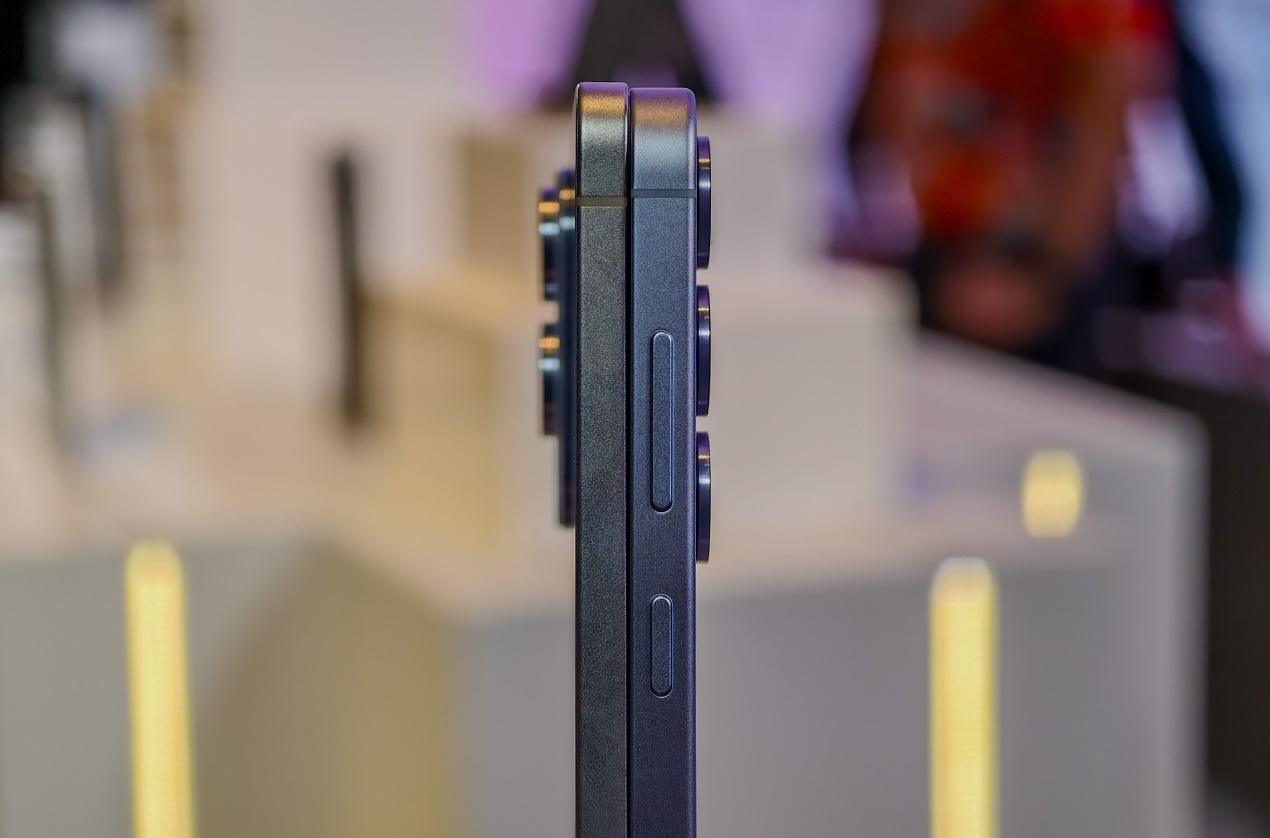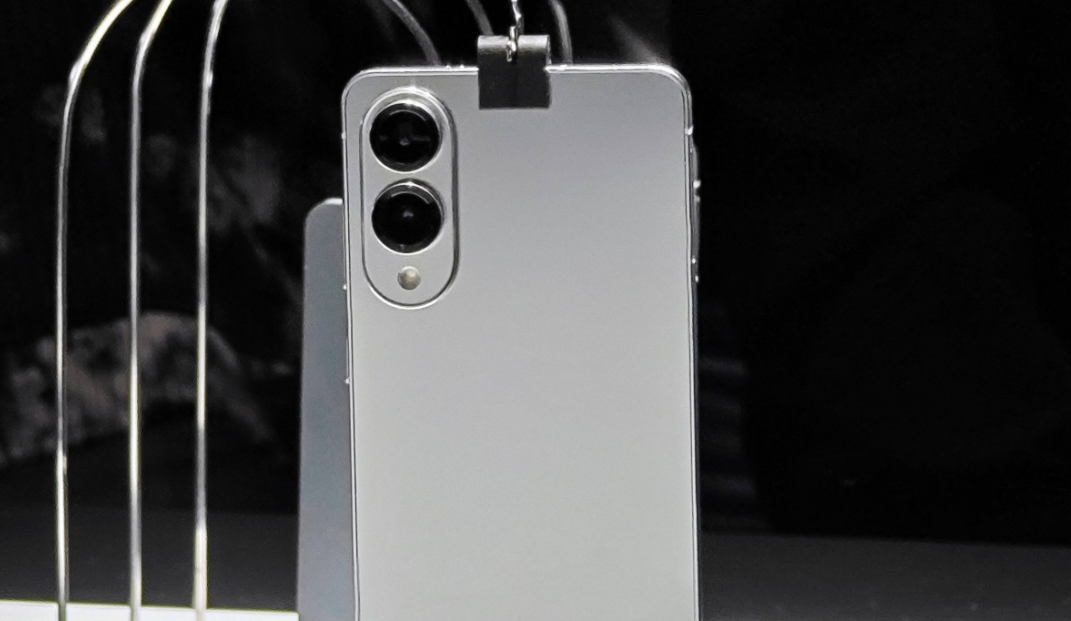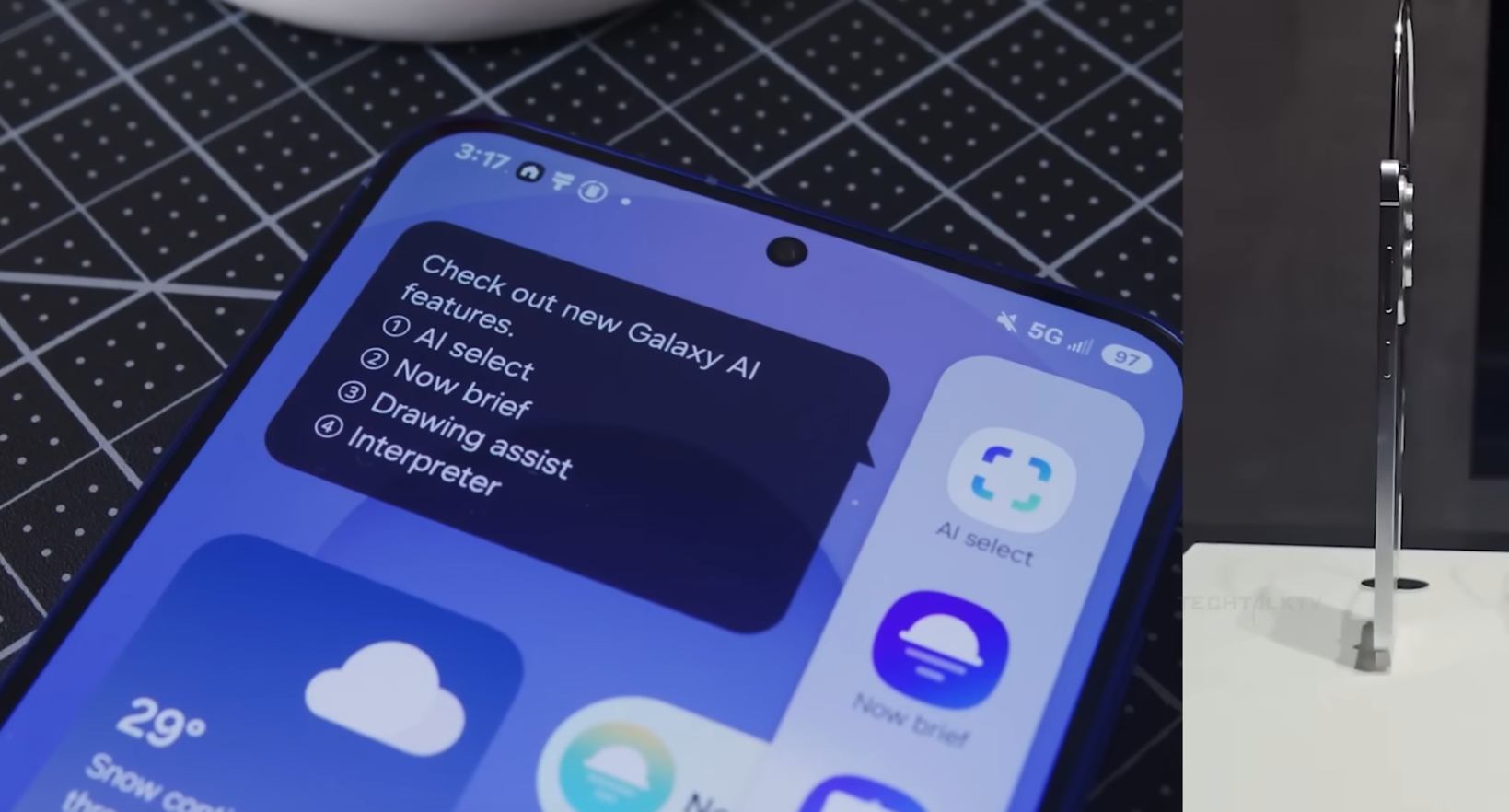Samsung has unveiled its latest design statement, the Galaxy S25 Edge, a phone that unabashedly prioritizes form factor above all else. Positioned as a slimmed-down S25 Plus, the Edge retains the same 6.7-inch OLED display, the potent Snapdragon 8 Elite for Galaxy chipset, and Samsung's suite of AI features. However, achieving its remarkably thin 5.8mm profile comes with significant compromises, primarily concerning its camera system and battery life.

At just 5.8mm thick and weighing 163g, the S25 Edge is indeed among the thinnest traditional slab phones available, only slightly heavier than the standard S25 and comfortably thinner than previous Samsung models. While photos may not fully convey the effect, the physical feel is designed to impress upon handling. Despite its slender build, Samsung hasn't sacrificed durability, equipping the Edge with the S25 Ultra's tougher titanium frame and the new Gorilla Glass Ceramic 2 on the screen, alongside an IP68 rating. This suggests the phone should be quite sturdy, resisting calls of fragility often leveled against thin devices. The device features a 6.66-inch 2K straight screen with a 120Hz LTPO refresh rate and 2160Hz high-frequency PWM dimming, a welcome feature for users preferring flat displays.
Performance is a clear strength. The Snapdragon 8 Elite for Galaxy, built on a 3nm process, delivers impressive benchmark scores, exceeding 4 million in AnTuTu and scoring high in GeekBench 6. This represents about a 25% performance leap over its predecessor, coupled with LPDDR5X RAM and UFS 4.1 storage for strong multitasking. Its AI capabilities are enhanced by the 7th generation AI engine, supporting features like real-time video summary and image generation, with AI photo editing accelerated by 40%. It's also optimized for gaming, supporting high frame rates in demanding titles like Genshin Impact with stable performance. However, relying solely on passive cooling via the titanium frame and ceramic back means potential thermal throttling and high surface temperatures (above 45°C) during prolonged high-load scenarios like gaming with ray tracing.

The camera system is one of the Edge's major trade-offs. It features only two rear cameras: a 200MP main sensor (the same high-quality ISOCELL HP2 found in the S25 Ultra) and a 12MP ultrawide lens (identical to the standard S25). Critically, there is no dedicated telephoto lens. While the main camera promises excellent detail and clarity, potentially matching the Ultra's primary shooter, the lack of optical zoom reduces versatility. Portrait mode relies on cropping the main sensor, and edge blur algorithms may have issues.

The most significant concern is the battery. The 3,900mAh cell is the smallest in the S25 lineup, considerably smaller than the S25 (4000mAh) and Plus (4900mAh). With a large screen and powerful chipset, it's expected to have the worst battery life. Samsung estimates 24 hours of video playback, fewer than the S25 (29h) and Plus (30h). While optimizations might allow "a full day of moderate use" similar to the standard S25, heavy users might see only around 8 hours of life, far less than typical 5000mAh phones. There's also concern about long-term degradation impacting daily usability within the phone's promised seven years of software updates. Adding to this, the charging speed is limited to 25W.
Despite these compromises, the S25 Edge carries a premium price tag, starting at $1,099.99, positioning it between the S25 Plus and S25 Ultra. Samsung is targeting a niche audience willing to pay a "thinness tax" for extreme portability and design quality. For mobile gamers or photography enthusiasts who prioritize battery life and camera versatility, the S25 Edge presents clear limitations. It's a phone where the trade-off between form and function is particularly stark. Given the significant compromises, particularly regarding battery and camera versatility, waiting for comprehensive reviews before purchasing is highly recommended. Its success will depend on whether the market values its unique thinness enough to overlook its practical shortcomings.




